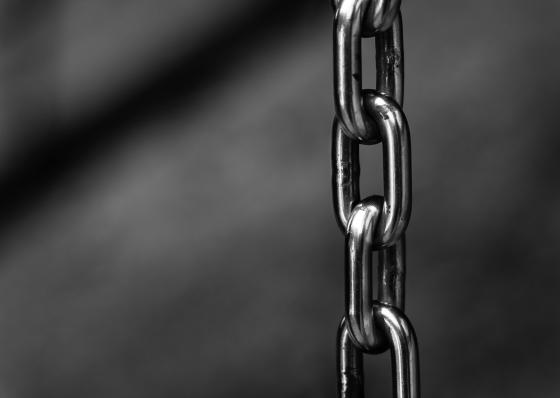How Encrypted Images Help Combat Counterfeiting ?

Questions?
Talk to a Digital Product Passport expert about your challenges - it's completely free.

In a world where the level of counterfeiting goods is growing yearly, Encrypted Images are one of the most cost-effective and easily applicable covert anti-counterfeiting technologies to combat counterfeiting. Encrypted Images can be used on very small, small, and medium-sized physical products or their packaging as an authentication method. They’re invisible and require a special device and connection to the server which makes them difficult to imitate.
By using encrypted images as authenticators, manufacturers ensure that only authorized parties can access and verify the true visual representation of a product, certificate, or document. This method complicates for counterfeiters to produce convincing fakes.
How are Global Brands affected by counterfeiting?
By 2030, one out of every twenty dollars spent on goods worldwide may be spent on fake items. Total displaced economic activity from counterfeiting in 2022 – namely the cost to brands and manufacturers – totaled $1 trillion, resulting in a loss of $4 billion to worldwide sales tax revenue, negatively impacting up to 5.4 million jobs.
Fake or illegally produced goods are found across almost every industry, but they are most prevalent in:
- Pharmaceuticals;
- Food;
- Consumer products;
- Electronics.
From the customer's viewpoint, at best, buying counterfeit goods is a waste of money. At worst, they can pose a significant risk to health and safety.
What Are Encrypted Images EXACTLY and Where They’re Most Helpful?
An encrypted image is an image that has incorporated encrypted information into photographs or the backgrounds of documents. The encrypted information is printed in an encoded format and is not detectable without special equipment.
A special device is used to hide information within an image, and a part of the image is marked to show where the hidden data is located. The encrypted image is then placed on a product or its packaging. For decoding, a special app or device is used to retrieve the hidden information from a server and reveal the encrypted data in the image.
Encrypted Images are mostly applied to documents, including travel documents and passports, cheques, paper valuables, etc. as an authentication method.
Encrypted Images an additional layer of security and verification for other industries too like Pharmaceuticals, Consumer Goods, Arts & Collectables, Electronics, and Luxury goods.
What is the Role of NFTs and Modern Technologies in Anticounterfeiting?
In some industries, for example - Medical Electronic Devices Guaranteeing the authenticity of a product is crucial, and fake products may lead not only to money loss but to one’s death. This is where NFTs enter the stage as a solution.
NFTs or non-fungible tokens are one-of-a-kind cryptographic tokens that are stored on a blockchain and cannot be replicated. They are assets like a piece of art, digital content, or video that have been tokenized via a blockchain. Tokens or unique identification codes are generated by an encryption mechanism from metadata. These tokens are then stored on a blockchain, while the assets themselves are stored in other physical or digital places.
Thus, NFTs are unique digital assets that represent ownership or proof of authenticity of a specific item. It is like a unique digital certificate permanently recorded on a blockchain.
Due to its immutability, uniqueness, and significant level of security, NFT, as a modern technology, plays an important role in fighting counterfeit goods, and global brands are increasingly introducing this technology as an anticounterfeiting tool.
How do NFTs Ensure Authenticity and Transparency in the Supply Chain?
NFTs are increasingly being used in the security industry because of their ability to create unique digital fingerprints, making it easier to track physical objects. This feature is being adopted in various business areas, especially in supply chains, and serves as a method for T&T objects, creating an extra layer of security against counterfeiting.
NFTs help to accurately identify and confirm the authenticity of items. The metadata in each NFT provides detailed tracking information, allowing businesses to know where physical items are at any given time, thus improving transparency and security in the supply chain. The metadata also records important details about the items, like the temperature of containers or the condition of materials during transport.
Essentially, NFTs provide a tamper-proof record of any data collected by connected devices or sensors.
How do NFTs help verify and track product authenticity and combat counterfeiting?
Once an item is produced, a corresponding NFT can be generated alongside it. After, it is linked uniquely to that specific product. Since it's on a blockchain, the information in the NFT is stored incredibly securely and cannot be changed or forged.
Apparently, NFTs make certification processes much more straightforward. In contrast to paper certificates that can be lost or forged, the digital certificate (NFT) is attached to the item forever and can be accessed online anytime.
Be it a first-hand purchase or a re-selling, the customer is always able to check product authenticity by simply checking the NFT associated with the item in a blockchain. Whether there is no NFT for the item or they don’t match, it gives a clear signal that the product is less likely to be genuine.
This approach not only verifies ownership and provenance but also facilitates transfers and resales while acting as a deterrent against counterfeiting.
Conclusion
Encrypted images are indeed one of the most interesting, relatively simple, and good mechanisms to combat counterfeiting, however, modern technologies in the form of NFTs and blockchains open up even greater possibilities against counterfeit products and are an additional step forward, especially for vital industries such as pharmaceuticals and medical technologies.
However, you will agree that the lack of authenticity of expensive luxury items is not a piece of good news for the buyer.
Using NFT might be the best way to guarantee the authenticity of such items. An even more interesting solution can be such authentication, when not only the user gets access to the item's originality and guarantee document, but also the brand has the opportunity to include the owners of the original item in the customer activation program and establish a special relationship with them.
If you're interested in how NFT can be used in brand protection programs, sign up for a free consultation to learn how Active Authentication can help you fight counterfeits and create more meaningful customer relationships.
